By Keith Testa - May 6, 2014 | 0 comments
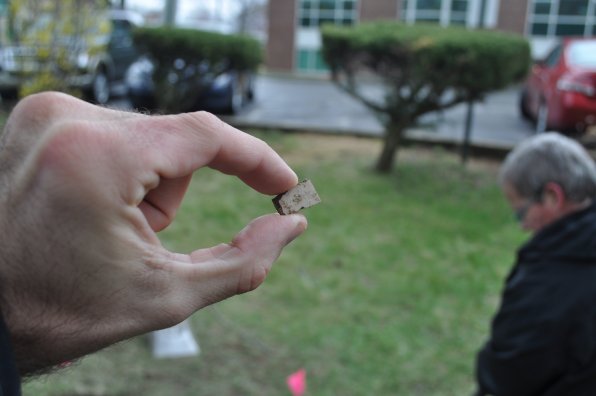
So what was DHR looking for? Primarily any evidence of the hospital’s existence. And maybe a caveman’s diary (but that’s just us speculating). “We expect to find construction debris, brick fragments, maybe a little bit of glass or ceramics,” said state archaeologist Richard Boisvert. “It would be nice to find something identifiable as medical equipment, but that might be kind of tricky.” They did find (from left) a piece of ceramic glazed on both sides (which could have been from a hospital item).
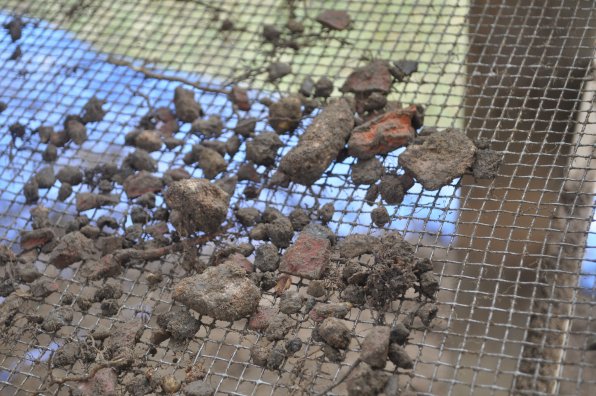
Can you spot all the ancient artifacts? That’s a trick question, because there aren’t any, not in this pile anyway. But every bit of brick and dirt that passed through the sifter had to be checked.
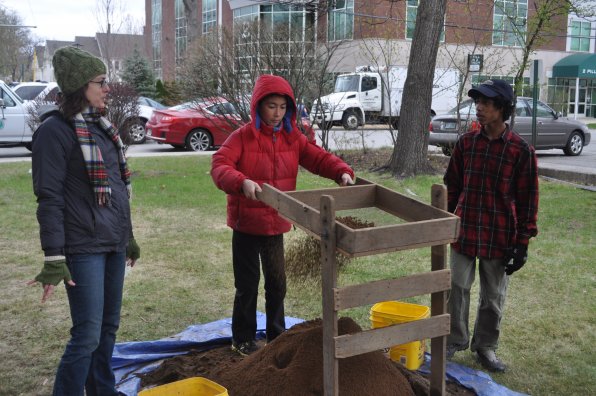
There were some guest sifters and potential future archaeologists on hand for part of the day, as students from The Beech Hill School in Hopkinton stopped by to check out the operation. This is Thomas Tuson getting his sift on while classmate Sam Shain prepares for his shift.
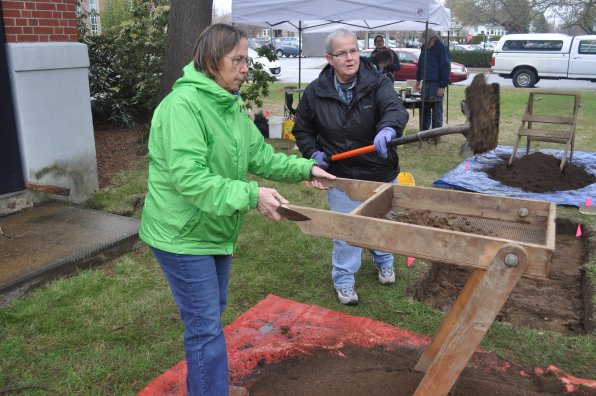
The dig site was separated into six quadrants and dug in 10 centimeter increments (centimeters are bugs with 100 legs, we think). Diggers tossed shovelfuls of dirt into a giant sifter, to let dirt through and catch artifacts in the mesh surface. It takes a discerning eye to separate boring brick and gravel chunks from interesting finds (like gold coins! Note: there weren’t any gold coins) on the fly, but that was no issue here – these are the pros. Above, Edna Feighner of DHR tosses some dirt into the sifter for Karen Malburne to examine.
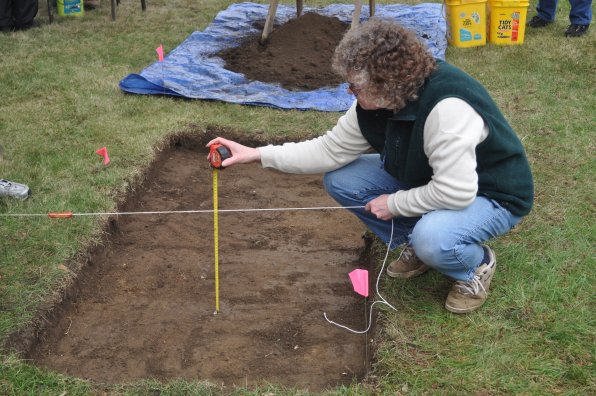
The Department of Historical Resources building is located in a former annex of the Margaret Pillsbury General Hospital, which opened in 1928. The hospital itself was built in 1891 (For reference, Columbus sailed the ocean blue in 1492) and there was once a brick hallway connecting the buildings. For Dig Days, a two-day archaeological field school open to visitors, DHR employees opted to open a dig site where that brick passageway stood, in hopes of finding some evidence of a subterranean foundation. Above, Chris St. Louis measures out the dig location.
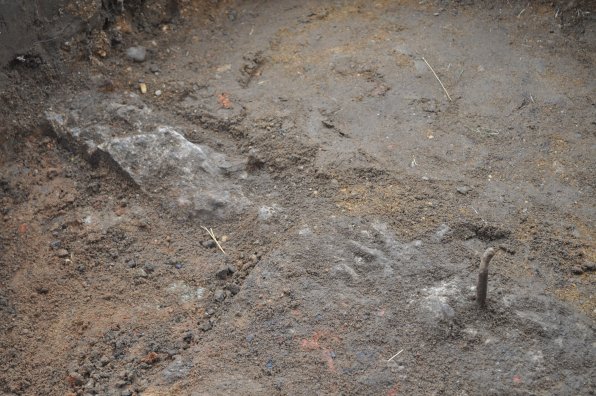
Success! Almost 30 centimeters down, St. Louis uncovered official evidence of the foundation that used to connect the buildings, complete with exposed ribar, which was precisely the day’s mission. Yay archaeology!
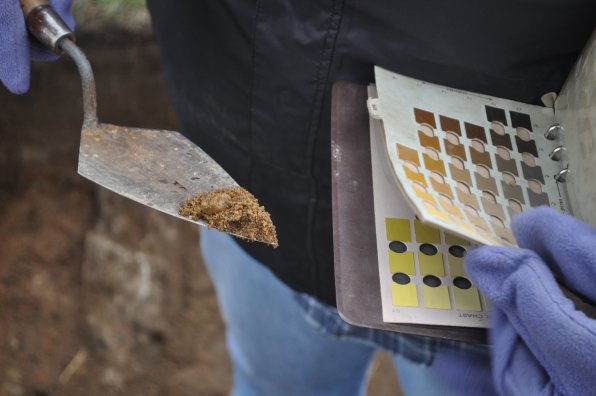
Even the dirt itself can tell a story (we were hoping for “Goodnight Moon”). Above, Feighner compares dirt from the dig site with a soil color chart book to obtain more accurate information.
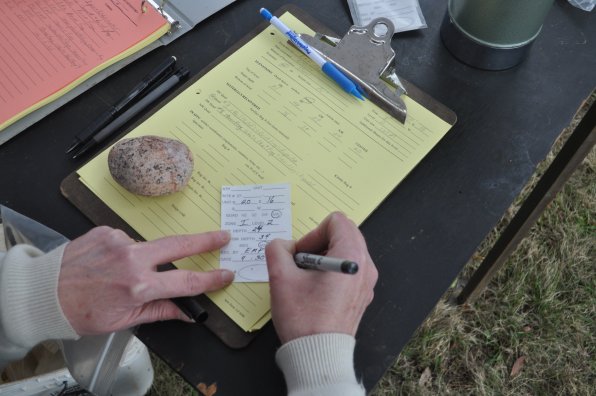
Every artifact, no matter how small, had to be labeled and bagged to be studied more intimately in a lab setting.
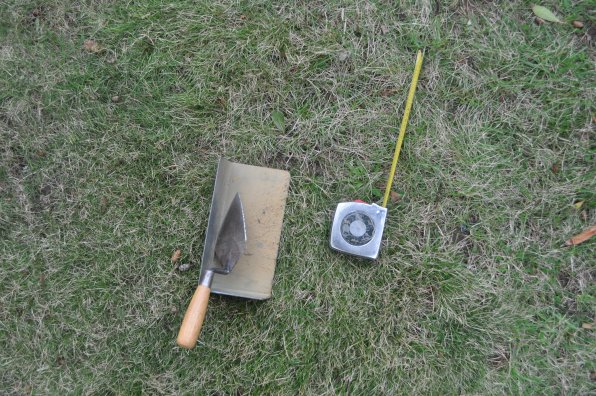
Stuff for diggin’ and measurin.’
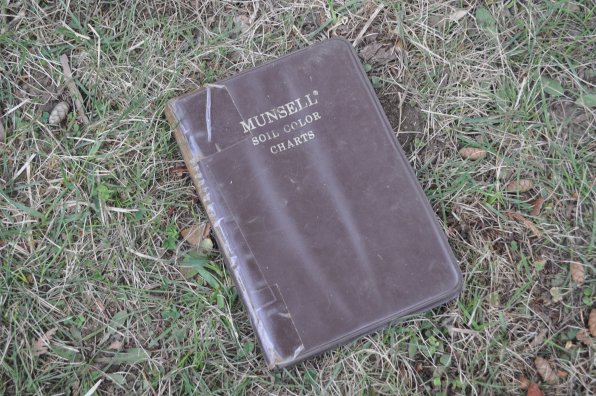
The definitive soil color chart book.
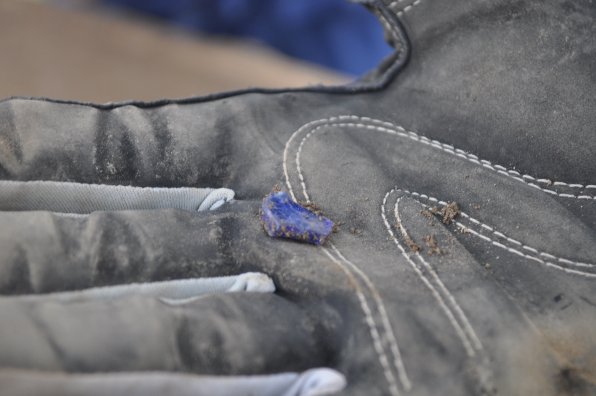
This is a piece of blue glass that Boisvert surmised could have come from a medicine bottle.
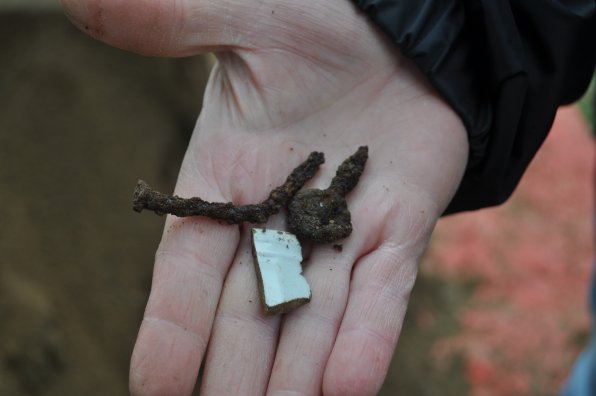
They also found more ceramic alongside a screw and possibly a key of some kind.
We spent an afternoon on location at DHR’s Dig Days to learn all about archaeology, and we’re pretty much pros now








